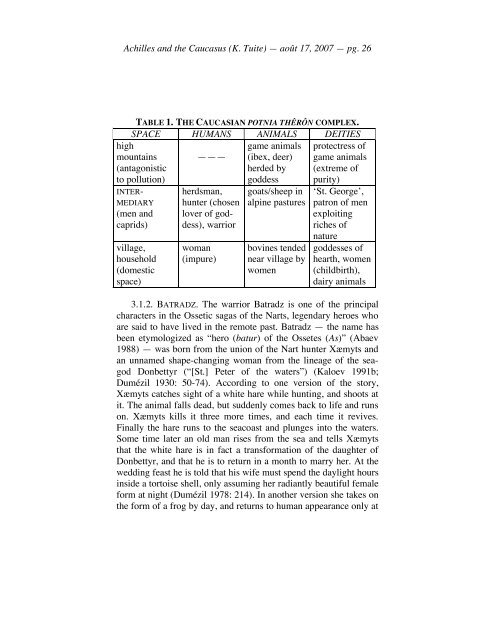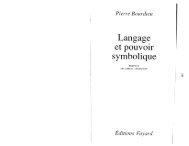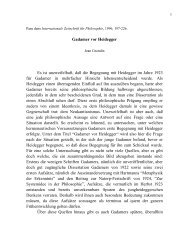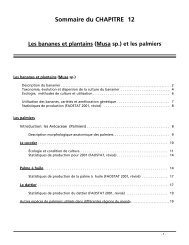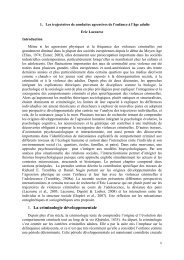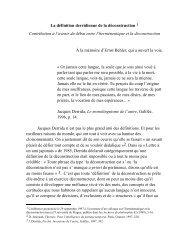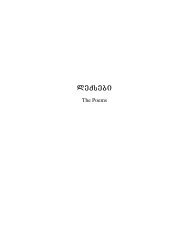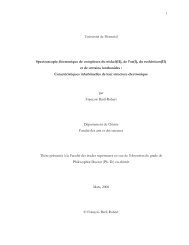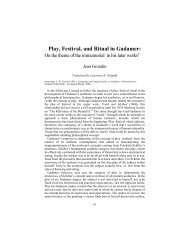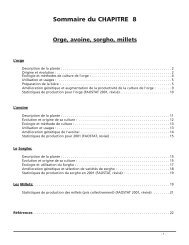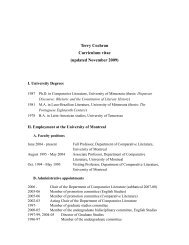Achilles and the Caucasus - Université de Montréal
Achilles and the Caucasus - Université de Montréal
Achilles and the Caucasus - Université de Montréal
Create successful ePaper yourself
Turn your PDF publications into a flip-book with our unique Google optimized e-Paper software.
<strong>Achilles</strong> <strong>and</strong> <strong>the</strong> <strong>Caucasus</strong> (K. Tuite) — août 17, 2007 — pg. 26<br />
TABLE 1. THE CAUCASIAN POTNIA THÊRÔN COMPLEX.<br />
SPACE HUMANS ANIMALS DEITIES<br />
game animals protectress of<br />
——— (ibex, <strong>de</strong>er) game animals<br />
her<strong>de</strong>d by (extreme of<br />
god<strong>de</strong>ss purity)<br />
high<br />
mountains<br />
(antagonistic<br />
to pollution)<br />
INTER-<br />
MEDIARY<br />
(men <strong>and</strong><br />
caprids)<br />
village,<br />
household<br />
(domestic<br />
space)<br />
herdsman,<br />
hunter (chosen<br />
lover of god<strong>de</strong>ss),<br />
warrior<br />
woman<br />
(impure)<br />
goats/sheep in<br />
alpine pastures<br />
bovines ten<strong>de</strong>d<br />
near village by<br />
women<br />
‘St. George’,<br />
patron of men<br />
exploiting<br />
riches of<br />
nature<br />
god<strong>de</strong>sses of<br />
hearth, women<br />
(childbirth),<br />
dairy animals<br />
3.1.2. BATRADZ. The warrior Batradz is one of <strong>the</strong> principal<br />
characters in <strong>the</strong> Ossetic sagas of <strong>the</strong> Narts, legendary heroes who<br />
are said to have lived in <strong>the</strong> remote past. Batradz — <strong>the</strong> name has<br />
been etymologized as “hero (batur) of <strong>the</strong> Ossetes (As)” (Abaev<br />
1988) — was born from <strong>the</strong> union of <strong>the</strong> Nart hunter Xæmyts <strong>and</strong><br />
an unnamed shape-changing woman from <strong>the</strong> lineage of <strong>the</strong> seagod<br />
Donbettyr (“[St.] Peter of <strong>the</strong> waters”) (Kaloev 1991b;<br />
Dumézil 1930: 50-74). According to one version of <strong>the</strong> story,<br />
Xæmyts catches sight of a white hare while hunting, <strong>and</strong> shoots at<br />
it. The animal falls <strong>de</strong>ad, but sud<strong>de</strong>nly comes back to life <strong>and</strong> runs<br />
on. Xæmyts kills it three more times, <strong>and</strong> each time it revives.<br />
Finally <strong>the</strong> hare runs to <strong>the</strong> seacoast <strong>and</strong> plunges into <strong>the</strong> waters.<br />
Some time later an old man rises from <strong>the</strong> sea <strong>and</strong> tells Xæmyts<br />
that <strong>the</strong> white hare is in fact a transformation of <strong>the</strong> daughter of<br />
Donbettyr, <strong>and</strong> that he is to return in a month to marry her. At <strong>the</strong><br />
wedding feast he is told that his wife must spend <strong>the</strong> daylight hours<br />
insi<strong>de</strong> a tortoise shell, only assuming her radiantly beautiful female<br />
form at night (Dumézil 1978: 214). In ano<strong>the</strong>r version she takes on<br />
<strong>the</strong> form of a frog by day, <strong>and</strong> returns to human appearance only at


